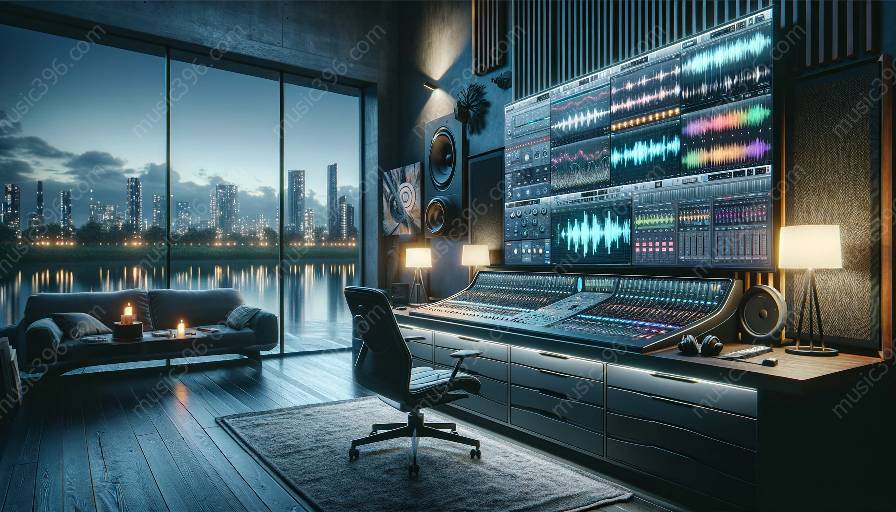Spatial audio processing and virtual surround sound have revolutionized the way we experience audio in various mediums, from music and movies to virtual reality and gaming. In this comprehensive guide, we will delve into the fascinating world of spatial audio processing and virtual surround sound, exploring their applications in audio software applications and sound engineering.
Understanding Spatial Audio Processing
Spatial audio processing is a technique that creates a sense of auditory space, allowing sound to be perceived as coming from different directions and distances, mimicking the way we perceive sound in the real world. It involves the manipulation of audio signals to create a 3D audio environment, providing a more immersive and realistic listening experience.
One of the key components of spatial audio processing is binaural audio, which utilizes cues such as interaural time differences and interaural level differences to create the perception of sound localization. This means that the listener can perceive sounds coming from different directions, giving the impression of a three-dimensional auditory space.
Applications of Spatial Audio Processing
Spatial audio processing has a wide range of applications across various industries. In the realm of music production, spatial audio processing allows for the creation of more immersive and spatially expansive mixes, enhancing the listening experience for the audience. It is also widely used in virtual reality and gaming to create realistic and immersive audio environments that enhance the overall experience for the user.
In the field of sound engineering, spatial audio processing is used to create a sense of depth and dimension in audio recordings, allowing for more dynamic and captivating soundscapes. It has also found its way into the world of audio software applications, where various plugins and tools are designed to harness the power of spatial audio processing, enabling users to manipulate audio in three-dimensional space.
Virtual Surround Sound: The Ultimate Immersive Experience
Virtual surround sound technology aims to recreate the experience of multi-speaker surround sound systems using just a pair of headphones or a stereo speaker setup. By utilizing advanced algorithms and signal processing techniques, virtual surround sound creates the illusion of a multi-directional audio environment, providing a truly immersive listening experience.
Virtual surround sound is particularly popular in the realm of home entertainment, where it allows users to experience cinematic audio experiences without the need for a complex and costly speaker setup. It also plays a crucial role in gaming, providing players with a competitive edge by enhancing spatial awareness and enabling more accurate sound localization within the game environment.
Compatibility with Audio Software Applications
Both spatial audio processing and virtual surround sound have become integral parts of modern audio software applications. Many digital audio workstations (DAWs) and audio editing software platforms now include built-in tools and plugins for spatial audio processing, allowing sound engineers and music producers to create immersive and spatially enhanced audio experiences.
Similarly, virtual surround sound technology has been integrated into various audio software applications, enabling users to enjoy a virtual surround sound experience while using their favorite music or multimedia applications. This compatibility has opened up new creative possibilities for content creators and audio enthusiasts, allowing them to leverage advanced audio processing techniques to enhance their work.
Sound Engineering and Spatial Audio Processing
Sound engineering plays a crucial role in the implementation and optimization of spatial audio processing and virtual surround sound. Sound engineers are responsible for capturing, recording, and mixing audio in a way that effectively utilizes spatial audio processing techniques to create immersive and impactful soundscapes.
Moreover, sound engineers are continuously exploring new methods and technologies to push the boundaries of spatial audio processing and virtual surround sound, aiming to deliver unparalleled audio experiences across various mediums. Their expertise and creativity contribute to the seamless integration of spatial audio processing in the production and post-production processes of audio content.
Conclusion
Spatial audio processing and virtual surround sound have significantly transformed the way we perceive and experience audio. From creating lifelike audio environments in virtual reality to enhancing the overall impact of music and multimedia content, these technologies continue to push the boundaries of audio innovation. Their compatibility with audio software applications and their indispensable role in sound engineering make them essential tools in the modern audio landscape.
As the demand for immersive audio experiences continues to grow, spatial audio processing and virtual surround sound are poised to play an increasingly pivotal role in shaping the future of audio production and consumption. With ongoing advancements in technology and a relentless pursuit of audio excellence, these groundbreaking techniques are set to redefine the boundaries of auditory perception and immersion.


























